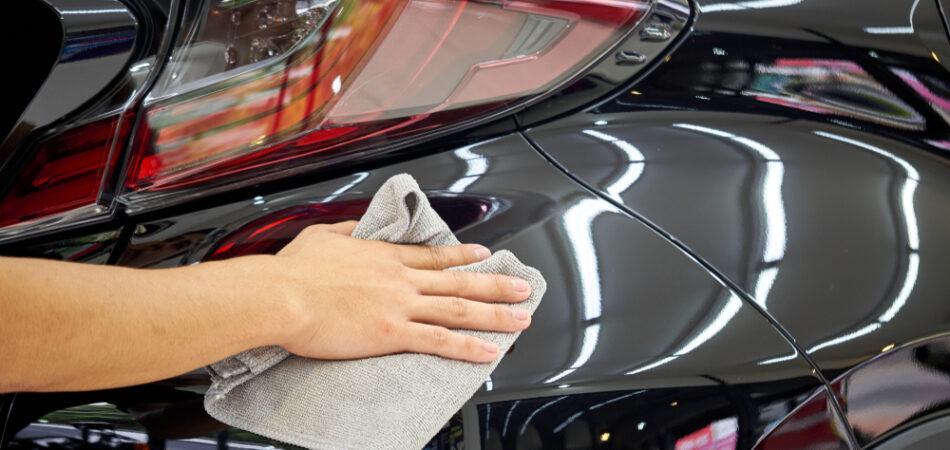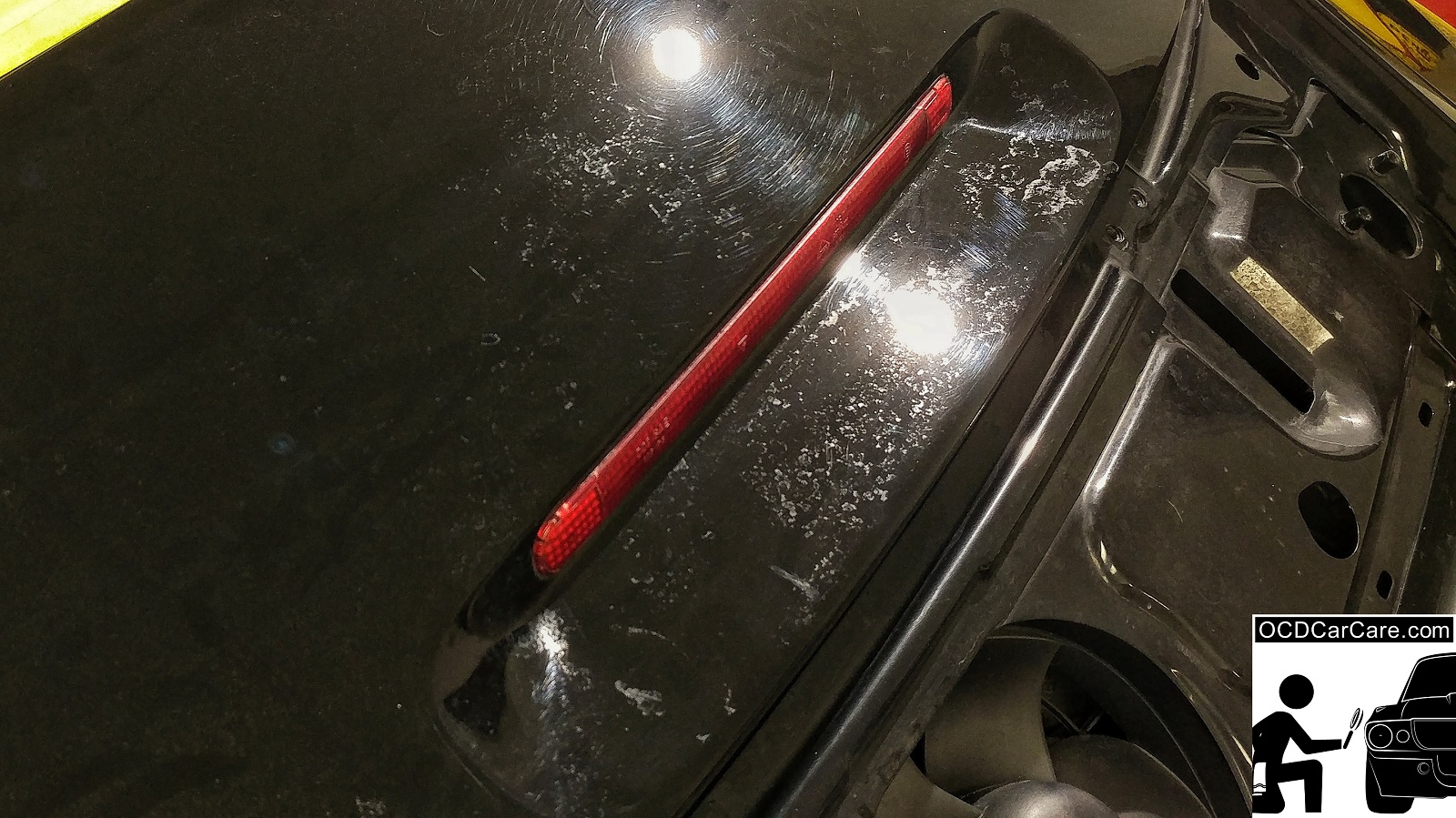Ceramic Coating: The Future of Automotive Surface Protection
Ceramic Coating: The Future of Automotive Surface Protection
Blog Article
Ceramic Covering vs. Traditional Wax: Which Supplies Much Better Long-Term Defense?
The debate in between ceramic coverings and standard wax for automobile defense has actually amassed substantial focus amongst vehicle fanatics and experts alike. While both satisfy of guarding paint, their distinctions in sturdiness, application, and lasting maintenance expenses may influence a consumer's selection. Ceramic coverings boast exceptional longevity and resistance to environmental factors, yet the intricacy of their application questions regarding ease of access and functionality. As we explore these contrasting options, it comes to be important to take into consideration not only the immediate advantages yet likewise the ramifications for automobile care over time.
Introduction of Ceramic Layer
Ceramic layer has gained significant appeal amongst auto lovers and detailers alike due to its advanced safety high qualities. This innovative technology is developed to produce a resilient, hydrophobic guard over a vehicle's paint surface, significantly improving its resistance to ecological contaminants such as dirt, UV rays, and chemical discolorations. Unlike traditional wax, which supplies a short-lived layer of protection, ceramic finishes bond at a molecular degree with the paint, providing resilient durability-- commonly expanding past two years with appropriate maintenance.
The application process entails meticulous preparation of the car's surface area, consisting of cleansing and brightening to ensure ideal bond. When used, the coating remedies to develop a robust layer that not just includes deepness and gloss to the paint yet also simplifies maintenance. With its hydrophobic residential or commercial properties, ceramic finish permits water and dust to glide off even more conveniently, lowering the regularity of laundries and lessening the threat of swirl marks.
In addition, ceramic layers are readily available in numerous solutions, permitting individuals to choose products tailored to their particular requirements and preferences. In general, ceramic finishing stands for a considerable innovation in paint protection technology, providing superior performance compared to traditional options.
Introduction of Standard Wax
Traditionally considered as a staple in auto treatment, wax offers as a popular selection for those looking for a simple technique to enhance and secure their vehicle's paint - ceramic coating. Automotive wax generally makes up natural components, such as carnauba, or artificial substances, developed to create a safety layer externally of the paint. This layer not only enhances the car's gloss and shine but additionally provides a barrier against ecological contaminants
The application of wax is generally straightforward, making it accessible for both professionals and DIY enthusiasts. It can be applied by hand or device, permitting versatility in the describing process. When applied, wax needs a treating duration, after which it sets to create a safety covering. Wax is additionally understood for its capacity to fend off water, promoting a beading result that assists in the prevention of water spots and corrosion.
Nonetheless, while wax is effective for enhancing the visual allure of a lorry, it is very important to note that the protection it supplies might necessitate extra regular reapplication contrasted to different products, such as ceramic finishes. Overall, standard wax stays a preferred alternative for those prioritizing convenience of usage and instant visual enhancement.
Resilience and Longevity Comparison
While both ceramic coverings and conventional wax deal protective benefits for automotive paint, their toughness and longevity differ dramatically. Standard wax, generally made from natural carnauba or artificial polymers, typically provides a safety layer that lasts approximately 3 to six Source months. This reasonably short life-span necessitates normal reapplication to keep optimum security.
In comparison, ceramic finishes are engineered from innovative nanotechnology, forming a covalent bond with the paint surface area. This results in a robust, hydrophobic layer that can withstand for 2 to five years, depending upon the product and ecological problems. The premium resilience of ceramic finishes is associated to their chemical structure, which provides enhanced resistance to scratches, UV rays, and oxidation.

Security Versus Ecological Variables
Protecting a car's paint from ecological elements is vital for maintaining its appearance and worth over time. Cars are constantly revealed to a selection of elements, including UV rays, bird droppings, tree sap, acid rain, and roadway crud, every one of which can jeopardize the honesty of the paintwork.
Ceramic coatings give a durable protection versus these environmental assailants. Unlike conventional wax, which can weaken quickly under UV direct exposure, ceramic coatings develop a durable, hydrophobic layer that resists the damaging effects of sunlight and toxic wastes. This advanced innovation produces a chemical bond with the vehicle's surface area, offering premium security that lasts for many years, also in severe conditions.
Standard wax, while simpler to use, normally needs regular reapplication and provides minimal resistance to contaminants and UV rays. Over time, it can damage down, leaving the paint prone to scrapes and oxidation. In contrast, ceramic finishes keep their safety top qualities longer, dramatically reducing the threat of paint damages and making sure that the vehicle maintains its visual allure. Consequently, ceramic layers are increasingly recognized as the premium option for long-lasting security versus environmental variables.
Application and Maintenance Differences
The approaches of application and subsequent maintenance for ceramic finishes and typical wax differ considerably, impacting the total customer experience and performance of each product. Ceramic finishes call for a more detailed application procedure, generally including surface visit this web-site area preparation that includes washing, sanitizing, and brightening the automobile. When the surface area prepares, the ceramic finish is used in a regulated environment, often requiring specialist expertise to ensure correct treating and bonding to the paint.

While both products improve automobile look, the longer-lasting protection used by ceramic coverings may justify their preliminary investment, despite the more requiring application process. On the other hand, traditional wax remains a popular selection for those looking for a simpler, albeit short-term, service.

Final Thought
Finally, ceramic layers demonstrate significant benefits over traditional wax in regards to resilience and environmental management. With a life expectancy prolonging 2 to five years and exceptional resistance to UV rays, dirt, and chemical stains, ceramic coverings use a more efficient service for long-lasting car maintenance. Although the application process may call for expert proficiency, the resulting price savings and reduced frequency of reapplication emphasize the worth of ceramic finishes for those seeking ideal car protection.
The dispute between ceramic layers and traditional wax for lorry protection has gathered considerable interest among automobile lovers and specialists alike. Unlike conventional wax, which offers a short-lived layer of defense, ceramic coverings bond at a molecular level with the paint, offering long-lasting durability-- commonly expanding beyond 2 years with proper maintenance.
While both ceramic coatings and conventional wax offer protective advantages for vehicle paint, their sturdiness and long life differ dramatically. For cars and truck enthusiasts looking for lasting protection, ceramic coverings offer an engaging benefit over typical wax products.
In final thought, ceramic finishes demonstrate substantial benefits over typical wax in terms of toughness and environmental defense.
Report this page